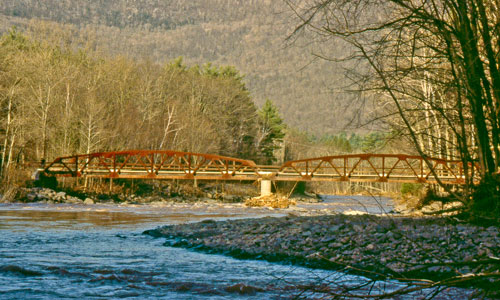
Anyone visiting the Ashokan Watershed may notice the number of roads crossing the streams. If not properly sized and placed, roads, bridges and culverts can create problems for the stream and surrounding communities. A bridge that is too small can constrict and back up water. This backed-up water may flood nearby properties and cause rocks and debris to accumulate behind the bridge. Flood flows diverting around sediment and debris piles can erode streambanks and undercut bridge supports. Culverts (usually hard plastic or metal pipes that convey water underneath a road crossing) that are too small often have the same effect. If crossings are not aligned properly with the stream course, they can direct water into streambanks and cause erosion. Undersized or improperly installed culverts can become fish passage barriers.
The Ashokan Watershed Stream Management Program (AWSMP) works with local, county, and state highway departments to properly size and align stream crossings in order to promote channel stability, prevent flooding and debris build-up, and maintain aquatic organism passage. These improvements have the benefit of increasing the lifespan of road infrastructure and reducing damage during high water events.
